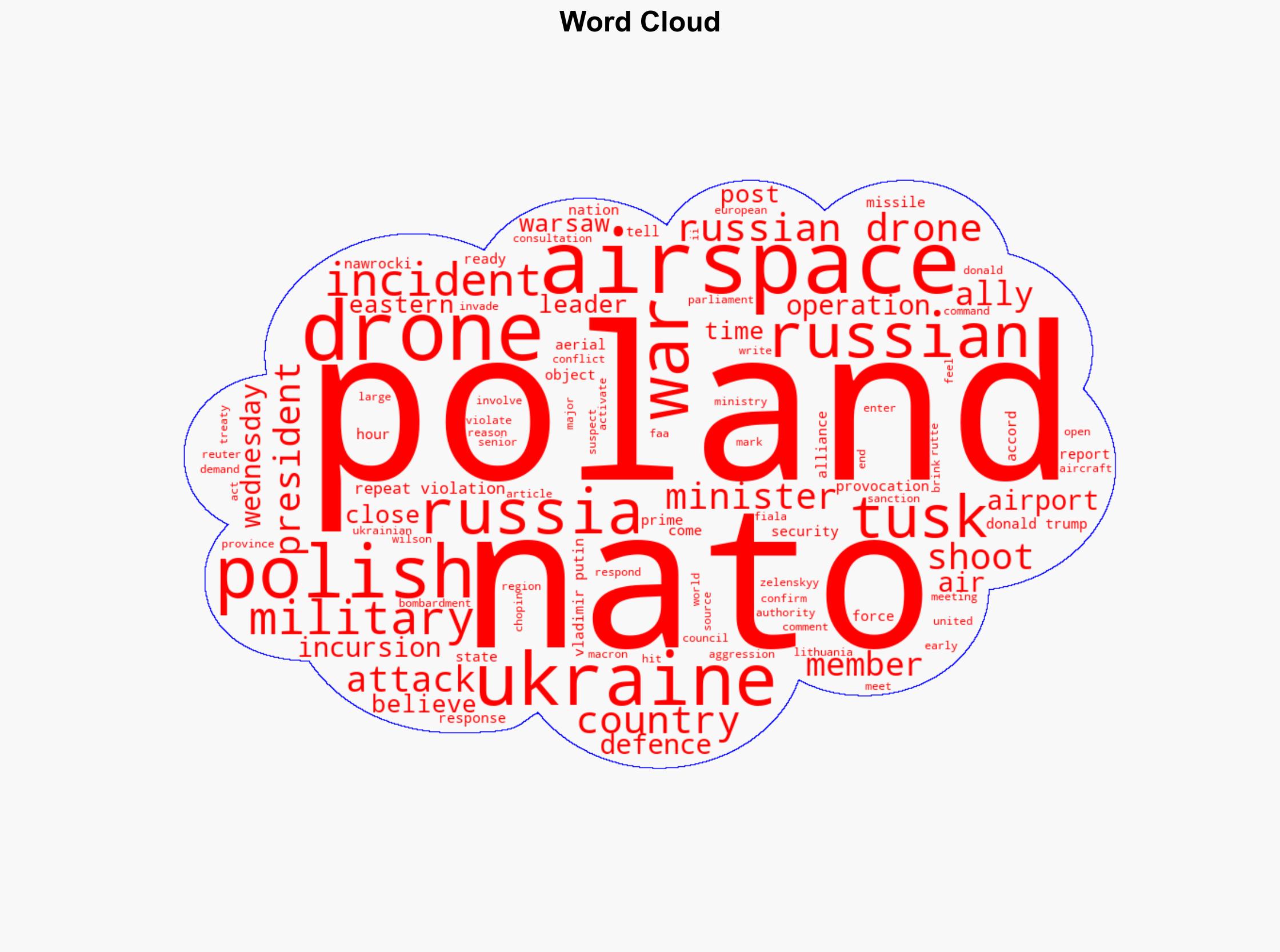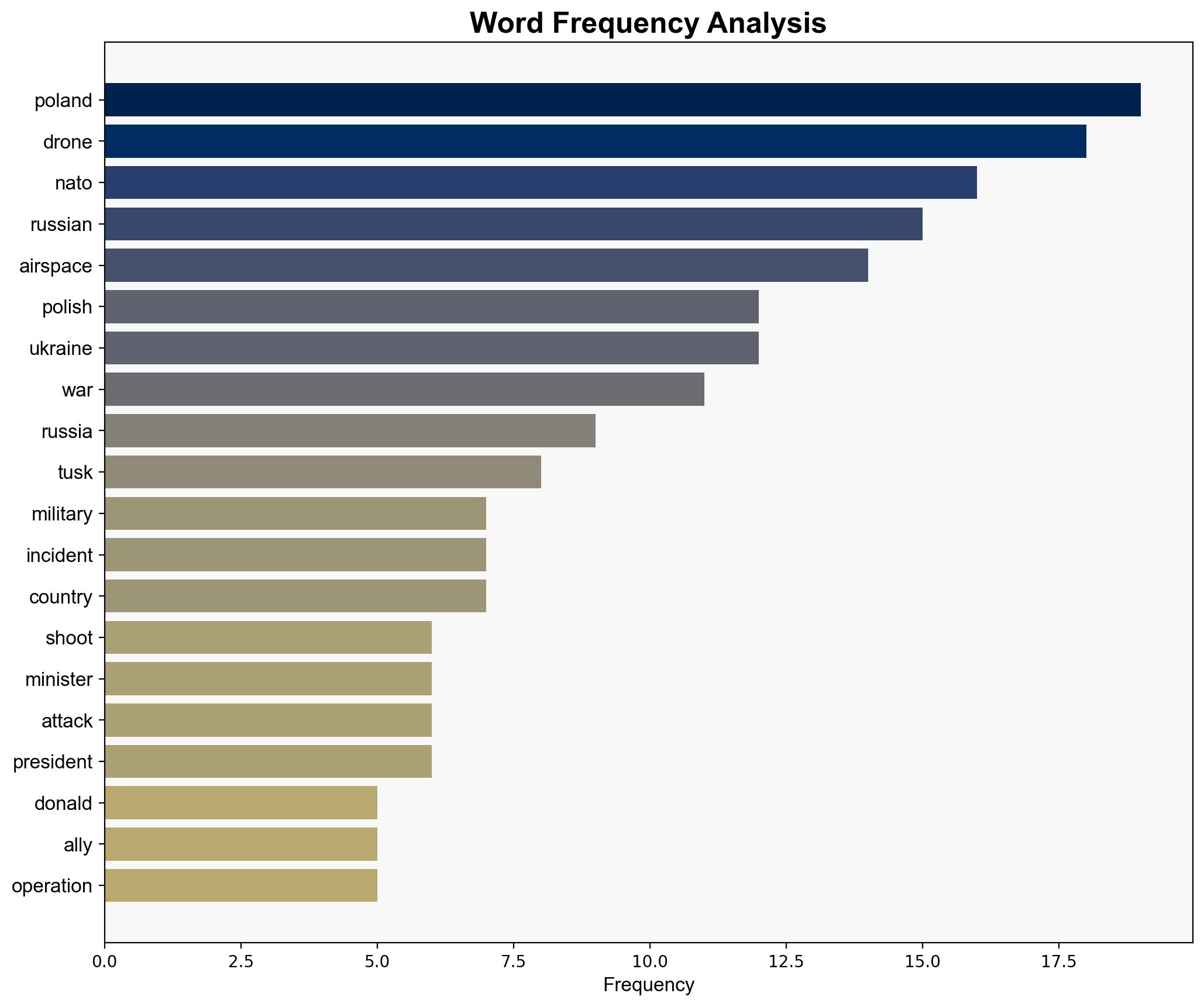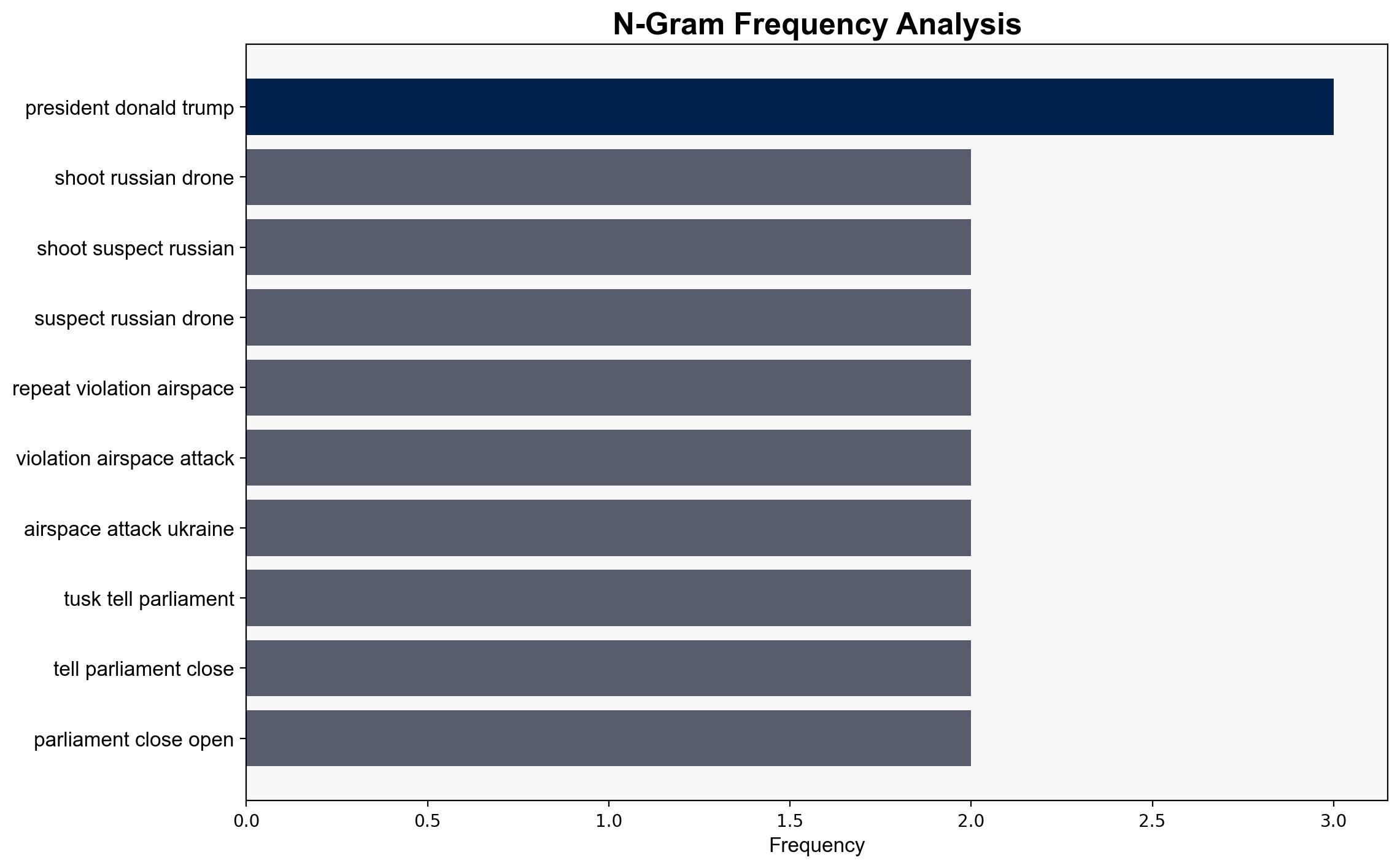Breaking Poland shooting down objects violating airspace PM says – ABC News (AU)
Published on: 2025-09-10
Intelligence Report: Breaking Poland shooting down objects violating airspace PM says – ABC News (AU)
1. BLUF (Bottom Line Up Front)
Poland’s recent military action to shoot down a suspected Russian drone violating its airspace is a significant escalation in regional tensions. The most supported hypothesis is that this incident is part of a broader pattern of Russian provocations aimed at testing NATO’s response capabilities. Confidence level: Moderate. Recommended action: Increase NATO surveillance and readiness in Eastern Europe, and engage in diplomatic efforts to de-escalate tensions with Russia.
2. Competing Hypotheses
1. **Hypothesis A**: The drone incursion is a deliberate Russian provocation designed to test NATO’s response and create instability in the region.
2. **Hypothesis B**: The drone’s entry into Polish airspace was accidental, possibly due to technical malfunction or miscommunication during Russian military operations in Ukraine.
Using ACH 2.0, Hypothesis A is better supported due to the pattern of repeated airspace violations, the strategic timing coinciding with Russian military actions in Ukraine, and Moscow’s denial of responsibility, which aligns with past behavior in similar incidents.
3. Key Assumptions and Red Flags
– **Assumptions**: Hypothesis A assumes intentionality behind the drone incursion, while Hypothesis B assumes a lack of control or communication error.
– **Red Flags**: Moscow’s denial of responsibility could be a deception tactic. The lack of concrete evidence linking the drone directly to Russian military operations is a critical gap.
– **Blind Spots**: Potential involvement of non-state actors or proxy groups is not considered.
4. Implications and Strategic Risks
– **Geopolitical Risks**: Escalation could lead to increased military engagements between NATO and Russia, risking broader conflict.
– **Economic Risks**: Heightened tensions may impact regional markets and energy supplies, especially if sanctions are expanded.
– **Cyber Risks**: Potential for retaliatory cyber operations targeting Polish infrastructure or NATO assets.
– **Psychological Risks**: Increased public fear and uncertainty in Poland and neighboring countries, potentially affecting political stability.
5. Recommendations and Outlook
- Enhance NATO’s air defense systems and intelligence-sharing mechanisms in Eastern Europe.
- Engage in diplomatic dialogue with Russia to clarify intentions and reduce miscommunication risks.
- Best-case scenario: Successful de-escalation through diplomatic channels.
- Worst-case scenario: Escalation into a broader military conflict involving NATO and Russia.
- Most likely scenario: Continued low-level provocations with periodic diplomatic engagements.
6. Key Individuals and Entities
– Donald Tusk
– Volodymyr Zelenskyy
– Mark Rutte
7. Thematic Tags
national security threats, cybersecurity, counter-terrorism, regional focus





